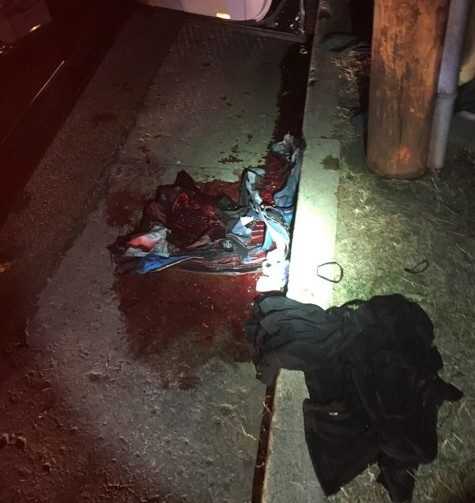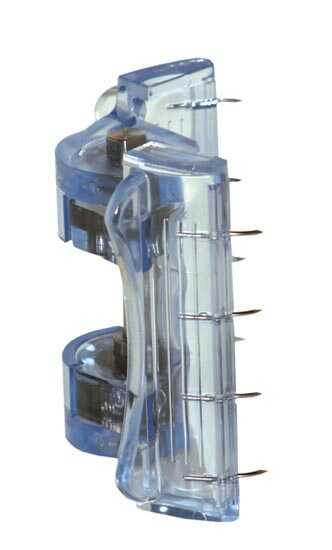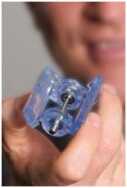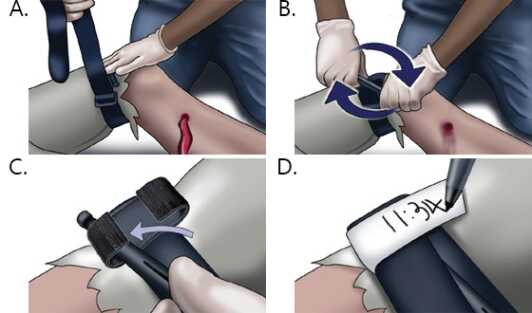 “Shots fired.”
“Shots fired.”
It’s the last thing you want to hear at the end of a double shift. Especially when your guts are rumbling from too many Red Bulls and your lip is raw from all the Copenhagen you’ve been packing in your mouth for the last twelve hours. But you have a job to do so you pull to the area; secretly praying someone will jump the call.
No one does.
Instead, a dark colored Lexus comes flying around the corner, a black SUV tight on its ass. Inside the SUV the driver hits the blues. The LED’s bounce off the metal street signs like a ricochet illuminating the corner that the dope boys and gang bangers abandoned earlier.
He bumps the siren, two short chirps, and the Lexus pulls to the curb.
So far it is just another stop, but you know things can go sideways in Memphis second. You are well trained, but there is always something you don’t know. You get out and move to the passenger side of the Lexus. Your hand goes to the butt of your pistol without even thinking and you are halfway to the Lexus and you hear, “he’s been shot.” You jog the rest of the way and when you look inside all you see is blood.
What do you do?
The US Army cites hemorrhaging- that is uncontrolled blood loss from an extremity- as the number one cause of preventable deaths on the battlefield. I did not know this when I started researching this article. In fact, I didn’t believe it.
So I did some digging. According to a 2013 Military Times report, “25% of the 4,596 combat deaths in Iraq and Afghanistan were classified as “potentially survivable. Out of those deaths 90% were from blood loss.”
I found this to be a staggering figure, especially for a country that has been at war since 2001. The next thing I wanted to know was, “does this figure carry over to the civilian side of the house?” No, it’s worse.
In 2011 Discover Magazine wrote an article that said, “each year more than half a million people bleed to death following traffic accidents and other severe trauma.” That article lead me to a medical journal that cited the Hartford Compendium- a document published in 2012, a few months after the Sandy Hook shooting. Following the shooting, the American College of Surgeons in collaboration with the medical community and representatives from the federal government, the National Security Council, the U.S. military, the Federal Bureau of Investigation, and governmental and nongovernmental emergency medical response organizations met in Harford Connecticut to create a protocol for national policy to enhance survivability from active shooter and intentional mass casualty events. The committee’s recommendations are called the Hartford Consensus, and currently consist of four reports.
The Harford Consensus became the foundation for the Stop the Bleed Campaign, launched by President Obama in 2015. I bring all of this up to frame a question.
If you or your loved one is caught in an active shooter, or mass casualty event, who is going to save their life?
If you answered, “policemen, firemen, EMT’s or any professional responder,” then you are WRONG.
Don’t believe me? Click on this link.
If you don’t have time, I’ll tell you what it says- “No matter how rapid the arrival of professional emergency responders, bystanders will always be first on the scene. A person who is bleeding can die from blood loss within five minutes, therefore it is important to quickly stop the blood loss. Those nearest to someone with life threatening injuries (immediate responder) are best positioned to provide first care”
Being a member of a full time SWAT teams means you get a lot of overtime, a lot of schools and see a lot of gadgets. I learned how to breach doors, clear a house during the day and under NODs, I leaned how to pit cars, but the only medical class I had came from the Combat Life Savers course I completed in the Army, and an Officer Medical class taught during our annual in-service.
A week before the stop my partner went to a class on hemorrhage control where they were teaching EMS and EMT personnel how to use a device called the iT Clamp. The clamp looks like a hair clip on steroids. It costs $35.00, but for a civilian to get one he or she needs a prescription from a doctor.
I had been carrying a SOF-T (tourniquet) since deploying to Iraq in 2004 and so did most of the guys on my team. We had been trained how to use them and knew that the rumors of losing an arm or leg if you put one on was a bunch of voodoo, but we were cops, not doctors. So when I walked up to the Lexus, looked inside and found the victim of the shots fired call passed out in his seat, I knew I wasn’t the best man for the job, but right now I was all the guy had.
The driver told us that the passenger had been shot with an AK 47 and begged us to let him take his friend to the ER. Problem was the closest hospital was ten minutes away and judging from the blood already pooled on the floorboard, he wasn’t going to make it.
I had seen what a 7.62 round does to flesh in combat, but this was the United States.
Thanks to the Army CLS class, I knew the reason the blood was bright red and spurting was because it was coming from an artery, and since the wound was in his leg I figured it was most likely the femoral artery.
Finally, I knew the guy wouldn’t survive the drive to the ER because it takes five minutes for a military age male to bleed out if the bleeding isn’t controlled. All of that told me that we had to do something right now.
A tourniquet is basically a belt with a windlass (handle) sewn in. Cheap ones have plastic handles; the good ones like the SOF-T have metal ones. Metal handles allow you to exert more force without breaking, which is good since a tourniquet is designed to dam the flow of blood before it reaches the hole.
1- You place it above the wound (because you are trying to dam the blood before it reaches the hole) but not on a joint, (because joints are made to move.)
2- When you have it where you want it, you pull the free end tight and then twist the windlass until bleeding stops.
3- Once the bleeding has stopped you secure the windlass. Securing the windlass is important because if you don’t the pressure that has built behind the tourniquet will be released (think a kinked hose that you suddenly straighten). You also want to periodically check to see if you need to apply more pressure.
I placed the first SOF-T as high on the leg as possible because I wasn’t sure if the artery had retracted into the pelvis. I cinched it down and twisted until that thing was a tight as a door on a submarine and then I checked the wound. It was still bleeding.
I called for a second tourniquet and placed this one directly above the wound, while one of the other deputies went to his truck for some QuickClot gauze. The thought was to pack the wound if this tourniquet failed, but while I was tightening the windlass my partner pulled out this thing that looked like a hair clip on steroids.
“What the hell is that thing?” I asked, still working the tourniquet.
“It’s an iT clamp, the passed them out in the class I went to last week.”
The steps to place it on the wound were ridiculously easy:
1- Place the clamp over the wound.
2- Ensure there is enough skin on each side to clamp.
3- Squeeze the edges of the iT clamp together until it locks into place.
While I tried to secure the windlass, the iTClamp was already working. The mechanics are pretty straightforward. Once the clamp has sealed the wound the blood has no place to go. It starts filling the wound pocket, forming a hematoma (bruise). As the pressure builds, the wound pocket stretches until the pressure in the wound equalizes with the pressure at the bleeding source.
It worked just as advertised and a moment after the hematoma formed, the victim IMMEDIATELY regained consciousness.
When the ambulance arrived a few seconds later the EMT’s stabilized him and loaded him up and walked over to my partner and said, “I was planning on using an iT clamp when I heard the call go out.”
A few days later we learned that the doctors found a hole in the victims superficial femoral vein and a large hole in the superficial femoral artery. The doctors called it a “huge injury” but the man survived it.
It is important to note that I do not work for Innovative Trauma or and Tourniquet company. I was not then, nor am I now a medical professional, however, I have since brushed up on my first aid. None of us are heroes, were simply the only people there. Knowing how to stop a bleed is one thing, having the necessary tools on hand is another. In fact, I believe in the iT clamp so much that I reached out to the manufacturer and asked how a civilian can get one. They Responded:
Overview:
- The iTClamp is a prescription-only device for bleeding control
- FDA Approved Indication: Temporary control of severe bleeding in the extremities, axilla, inguinal areas, scalp, and neck.
Prescription Only
- What does Prescription Only mean?
- Must be used under medical direction
- Available for sale to physicians, hospitals, medical care facilities
- Most first responders (police, fire, EMS) have a medical director that provides medical oversight
- Is NOT available for sale to the general public without a prescription
Who can order without a prescription?
- First responder AGENCIES (EMS, fire, police) have implied medical direction.
- Hospitals
- Doctor offices, surgical centers, and agencies that provide medical care to the general public
Who needs a prescription?
- Anyone that’s ordering it for PERSONAL use
- Example: if a police officer wants an iTClamp to have at home or to go hunting/diving/kayaking he needs a prescription.
- Companies that do not have implied medical direction include, but are not limited to:
- Security companies
- Sports groups
- Shooting ranges
- Manufacturing companies
What does the prescription look like?
- A doctor notepad or computer generated prescription, signed by the physician with his license information on it.
- It should say iTClamp for severe bleeding
How do potential customers get prescriptions?
- Some companies have a medical director, that doctor can write the prescription
- Go to their doctor
GENERAL GUIDELINES
- A person under contract, an employee at a company on contract or a person on payroll at Innovative Trauma Care CANNOT write a prescription for the iTClamp. Even if they have a medical license or the ability to write prescriptions
- DO NOT under any circumstances market, attend or influence conferences or shows that target non-medical professionals
- Do not dispense the product to individuals without a prescription
- The only exception is physicians ordering it for their medical practice or for themselves
Example of email wording
The iTClamp is a prescription device, so either an rx or medical direction are needed to distribute. If you need assistance with this, we can provide resources to facilitate the process.
We can assist you to educate your doctor and provide materials so he or she is comfortable prescribing the product. We can do training sessions, phone calls or just send materials to physicians so they understand the product better.
I am a civilian now, but I still carry an iT clamp in my truck and my wife’s car. I also carry gauze and a SOF-T because there is no such thing as a silver bullet when it comes to hemorrhage control. The iT clamp, pressure dressing, SOF-T all have their strengths and their weaknesses and it is up to you to have the training multiple options that work by different mechanisms to overcome the limitations of each one individually.
You can find more information on the iT Clamp at
https://www.innovativetraumacare.com/
For ordering information: MedAlliance group
Phone: +1-630-443-7070



Great article. Super useful.
Crazy this needs a prescription . (retired firefighter/ EMT) definetly a life saver
Just a simple question from a very non-medical person. Why not use clotting powder or gause and then apply a good amount of gause or other wrapping to hold the clotting agent on hemorrhaging wounds until medical help is available? As I understand it, none of these materials require a Rx and would not cut off circulation to the rest of the extremity if the patient was hours or even a day from medical help? Thanks.
Excellent question Ozark. An arterial wound needs some kind of pressure dressing to occlude the blood flow. Hemostatic agents such as QuikClot will stop some bleeding, but it won’t stop an arterial bleed on its own. Oftentimes you have to use two or three techniques at once. Like QuikClot and a tourniquet or QuikClot and a pressure dressing.
Gauze is good for packing wounds, but in my experience it is really hard to get it tight without it ripping.